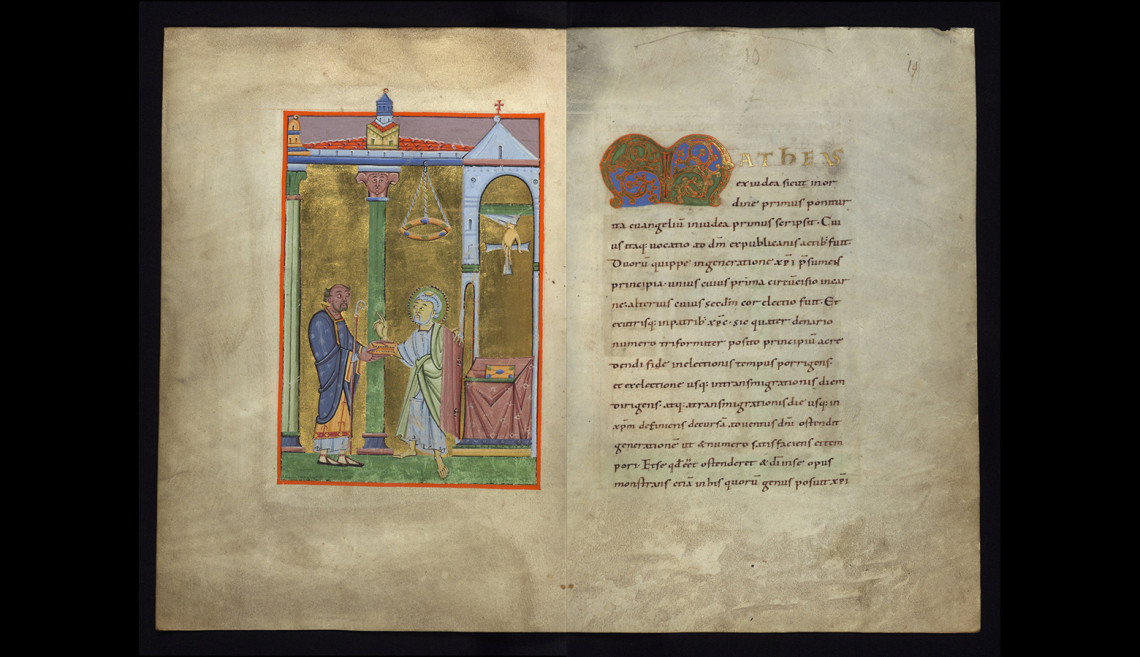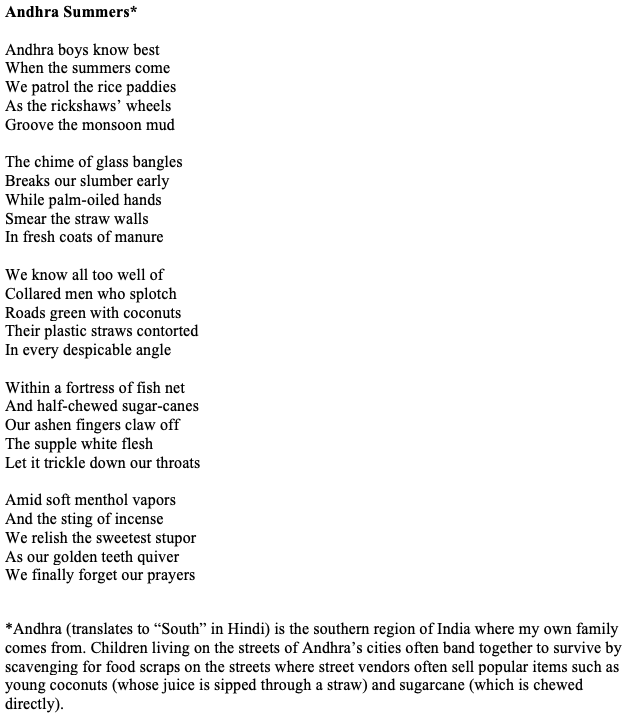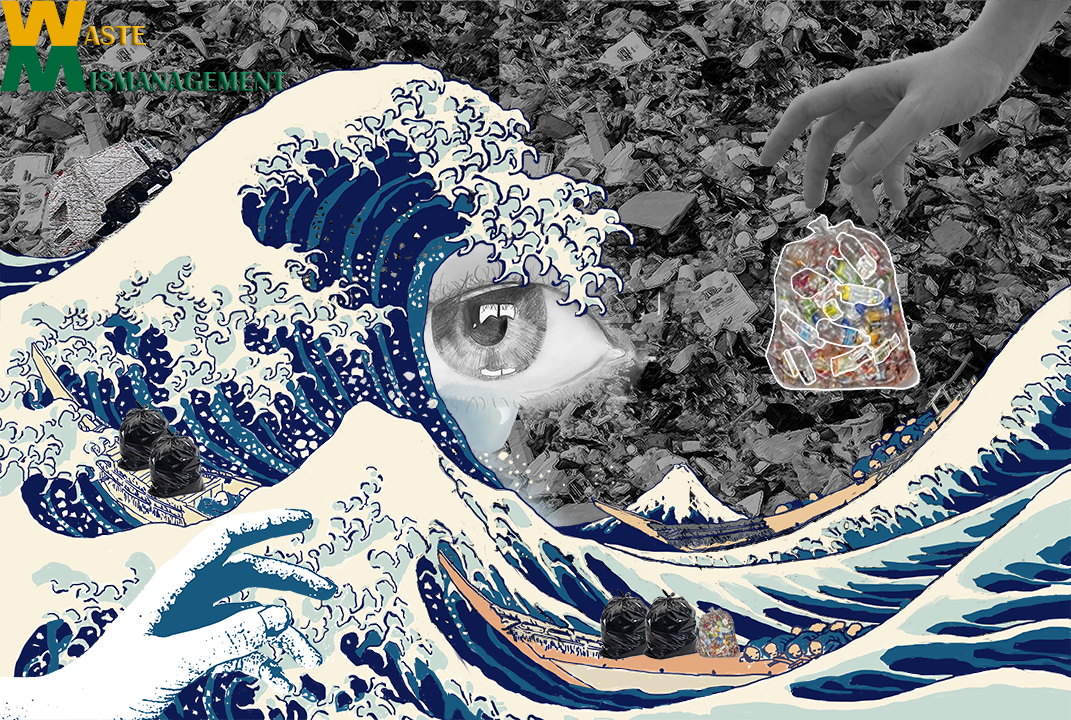
Pages from the Reichenau Gospels from the Middle of the 11th century CE. This Gospel Book is believed to come from the Abbey of Reichenau, on Lake Constance, on the basis of its script and illumination. As a whole, it is an excellent example of Ottonian book illumination. For full description, see http://www.thedigitalwalters.org/Data/WaltersManuscripts/html/W7/description.html.
The Walters Art MuseumWalters Art Museum manuscript collection makes a virtual move to Stanford
A new agreement will ensure the long-term preservation of the Walters Art Museum's digitized collection of medieval manuscripts and provide new apps for studying them.
More than 100,000 high-resolution images of unique medieval manuscripts will have a second home, thanks to a new agreement between the Walters Art Museum and Stanford University Libraries.
The Walters’ holdings of 850 medieval illuminated manuscripts and 150 single leaves, ranging in date from the ninth to the 19th century, are one of the most significant medieval collections in North America.
Openly licensed, high-quality digital resources can be assets, not just for the institution that makes them, but for any institution that curates them.
About two-thirds of the manuscript page images are already online through the Walters’ website – but the new home at the Stanford Digital Repository will add two important advantages: Stanford will give a long-term protection against file loss or corruption, and it will also provide digital handling tools that allow scholars to analyze the manuscripts and compare them with manuscripts elsewhere. The original manuscripts remain at the Walters Museum.
Available online
The digital tools will include a transcription tool, a side-by-side viewing tool, indices and other such apps. Stanford University Libraries offers access to the entire collection through its online catalog, SearchWorks.
William Noel, until recently curator of manuscripts and rare books at the museum and now at the University of Pennsylvania, was instrumental in launching the collaboration. Calling the Stanford investment “visionary,” he praised “its recognition that openly licensed, high-quality digital resources can be assets, not just for the institution that makes them, but for any institution that curates them.”
He said that the collaboration is “a model for any future enterprise in which it is recognized that images are best created in situ by imaging specialists, often in museums, and best conserved and disseminated by data specialists, often in libraries.”
Stanford Libraries
The Stanford Libraries have become prominent in the world of digitization, preservation and delivery of medieval content through a variety of efforts that include collaboration with Corpus Christi College at Cambridge to deliver the 538 manuscripts in the 16th-century library of Matthew Parker, the archbishop of Canterbury during the English Reformation.
“We have a flourishing community of medieval and early modern scholars here, with five new medievalists appointed this year alone,” said English Professor Elaine Treharne, a medievalist who joined the Stanford faculty last fall. “The images from the Walters Art Museum represent a first-research tool that will assist our work directly; and moreover, the world-class digital humanities expertise at Stanford puts us at the forefront of developments in this critical area of scholarship.”
The National Endowment for the Humanities (NEH) has given the Walters Art Museum several grants totaling nearly $1 million to digitize, catalog and distribute its manuscript collections.
“This collaboration and partnership with Stanford and its Digital Repository helps fortify our commitment to our work with the NEH, by assuring access over many years and in innovative ways,” said Julia Marciari-Alexander, executive director at the Walters.
“With the huge investments that institutions and funders have made in creating high-quality images of unique documents comes the responsibility to assure the resulting digital files are preserved, maintained, served and authenticated,” said Stanford University Librarian Mike Keller. “That’s a major motive for including them in a preservation-oriented archival environment like the Stanford Digital Repository.”
The Walters Museum
The Walters Art Museum is located in downtown Baltimore’s historic Mount Vernon Cultural District. When museum founder Henry Walters died in 1931, he left his entire collection of art – including a legendary collection of illuminated medieval manuscripts – to the city of Baltimore. Between 1895 and 1931, Walters collected around 730 codices.
Stanford Libraries’ collections of books, journals, scores and printed reference works comprise some 9 million physical volumes, as well as 1.5 million e-books, nearly 1.5 million audiovisual materials, more than 75,000 serials, thousands of other digital resources and nearly 6 million microform holdings.













